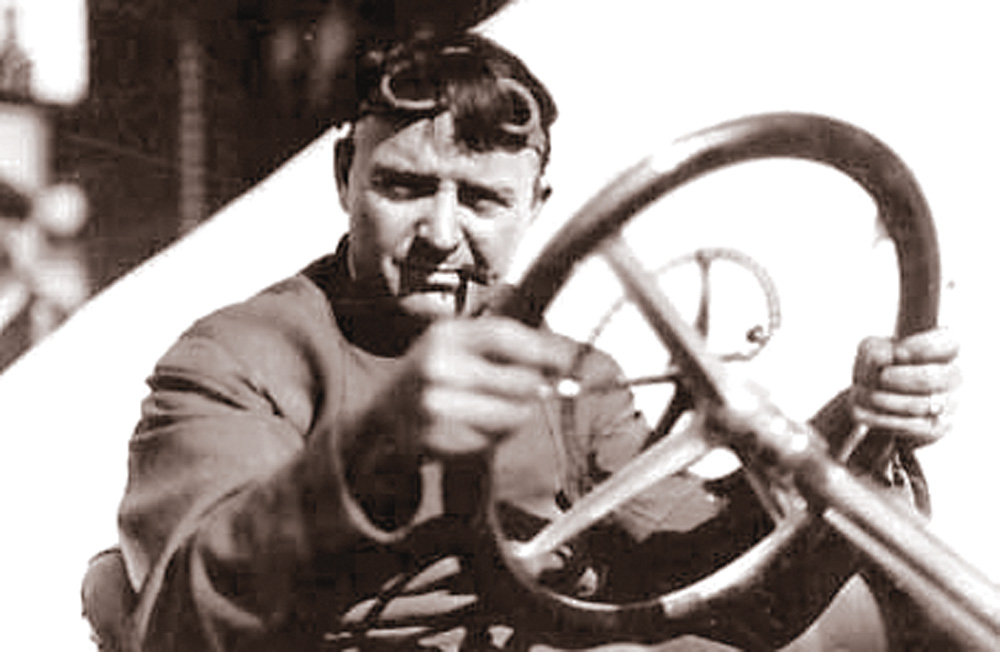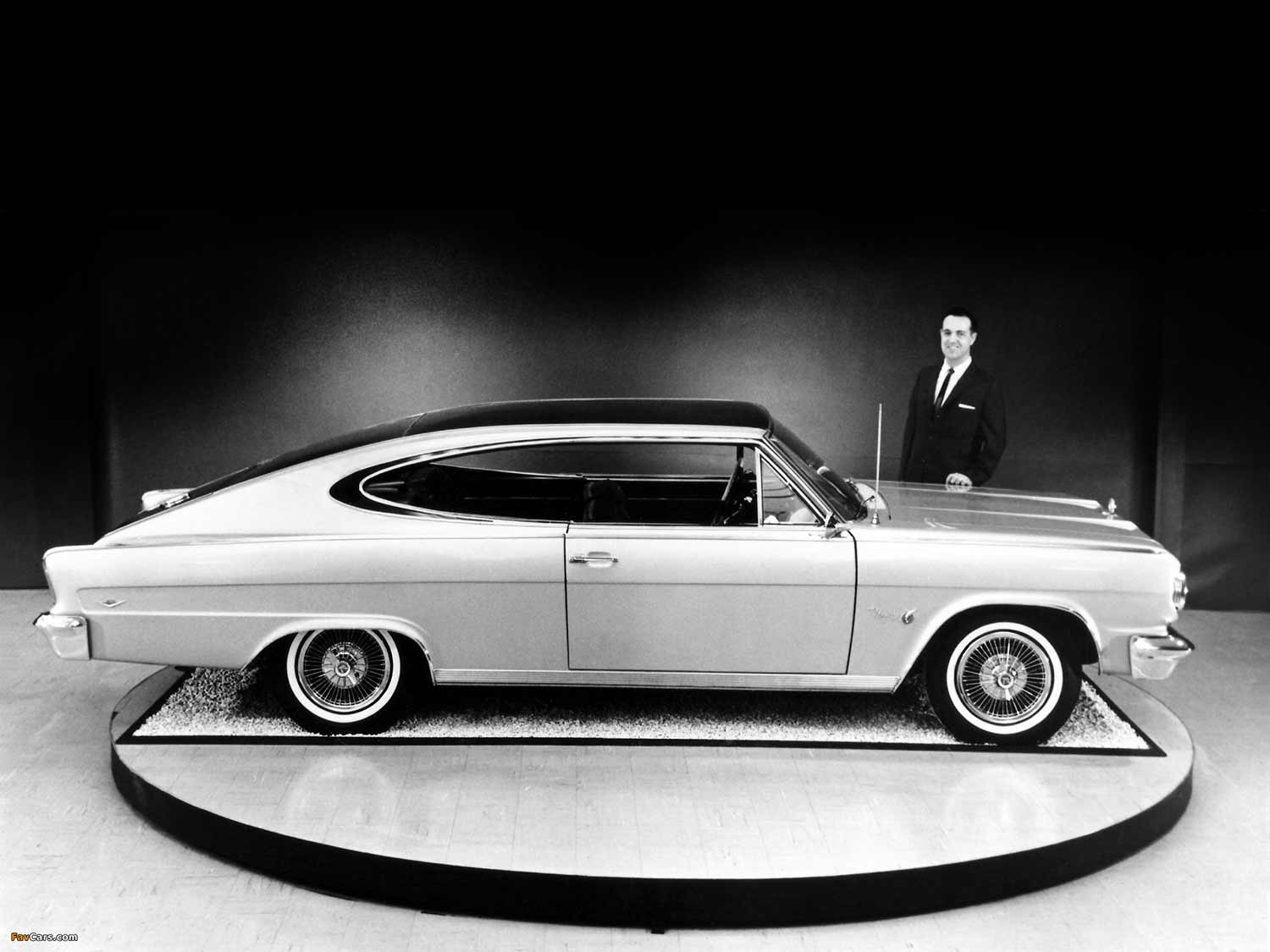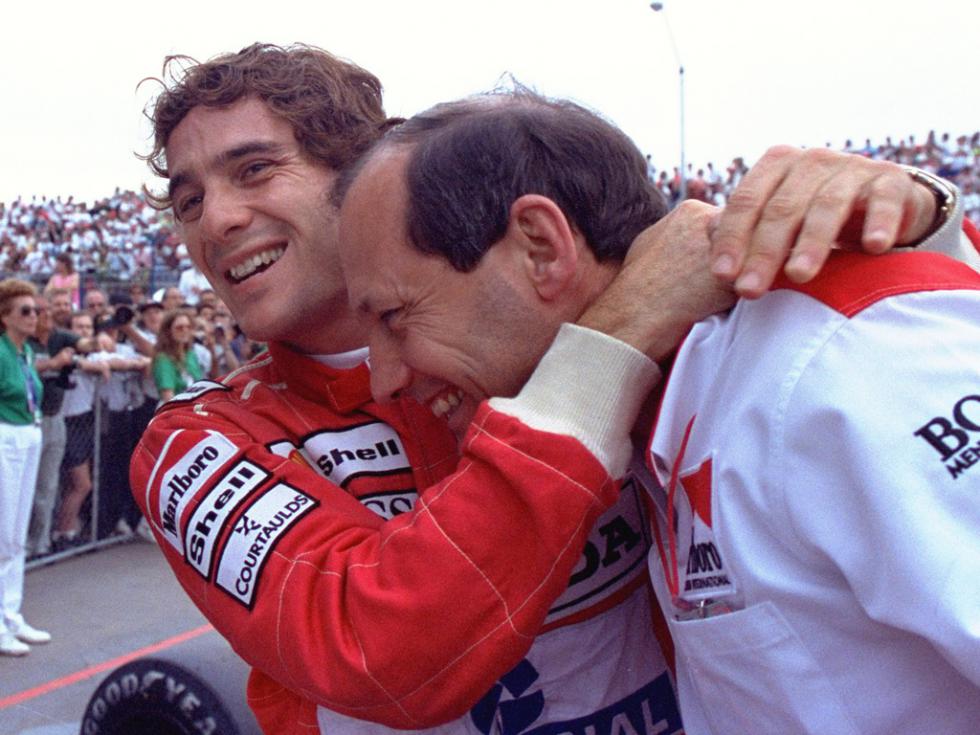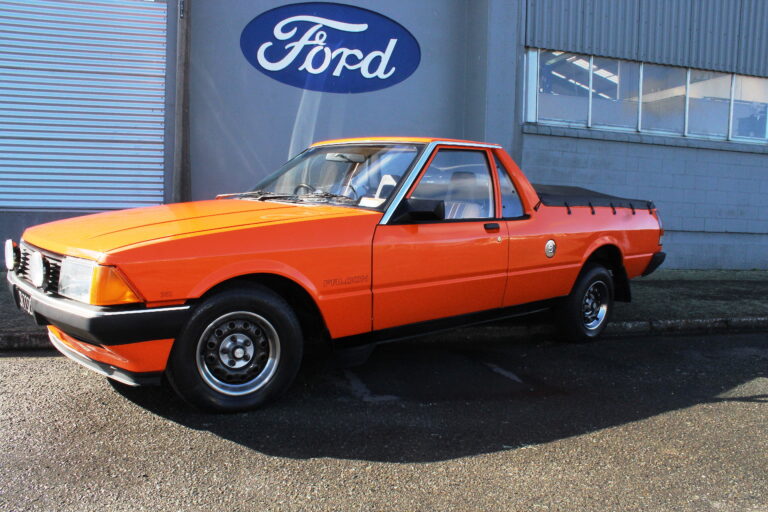Once again, Graeme Rice looks back on the motoring worlds of 100, 75, 50, and 25 years ago
February 1915

A wizard at the wheel — Barney Oldfield
Herbert Austin was an early beneficiary of the war effort when the Russians placed an order for over £50,000 worth of vehicles. Top of the list were 48 armoured cars, each able to carry a crew of five, two machine guns and able to reach 80km/h. Next on the list were 100 three-ton general transport lorries, then 18 workshop wagons, 16 tankers to carry petrol and 120 light and 20 heavy ambulances.
It was a shame about the Europeans being otherwise engaged and not able to participate fully in the American racing season, but at least it provided great contests between two of the best sports cars of the generation, the Mercer and the Stutz. Barney Oldfield took a Stutz from Los Angeles to Phoenix in a 1114km (696 mile) race across deserts, through snow, sleet and heavy rain. The harder stages descended into deep gorges, up over rocky ridges and through raging streams. Several times Oldfield bogged his Stutz and on a number of occasions he swamped it by going into streams too fast. He won at an average of 50km/h after averaging only 24km/h for the first few hours.
Late in the month, Dario Resta drove a Peugeot to victory in the American Grand Prix, at an average speed of 90.3km/h over 644km in San Francisco. Dario Resta – who he, some may ask? He was born in Milan in 1884, raised in Britain from 1886, and his racing career started at Brooklands in 1907. His US racing career lasted effectively only two years, 1915 and 1916, but over those two years he was a very successful performer, driving a 1914 GP Peugeot, with other successes including second at the Indy 500 later in 1915, and winning it the following year, and the American driving championship overall in 1916. It’s interesting to note that while racing in the US, the Peugeot did not feature the spare wheel mounted high in its long tail as seen in the 1914 French GP, a design feature affecting the car’s handling balance that may have contributed to defeat by Mercedes in the race.
Aluminium pistons were proving difficult to get right. To make a cast-iron piston light enough to allow higher revs required exacting workmanship as no one part of it could be cut too fine. On the other hand, aluminium pistons could be made lighter while still being thicker, but were inclined to collapse under heat. There were also issues with the rings cutting into the grooves and the holes for the gudgeon pins enlarging. The French and Belgians had been working on the correct mix for the alloy and were currently using 6.8 per cent copper, 2.4 per cent zinc, 0.64 per cent iron, 0.22 per cent silicon, and aluminium 94.4 per cent
February 1940

Motor racing pioneer S F Edge at the wheel of a Napier
Thomas Ward, a Sheffield steelmaker, had bought the moribund Triumph car company in autumn 1939. Now, with the Government contracts for weapons and machines he was able to sell a number of the Coventry factories to the Secretary of State for Air. By mid–1940 several of the factories had been bombed by the Luftwaffe.
That great showman, entrepreneur, racing cyclist and tri-cyclist, racing car driver, and the man who probably should be accredited as the motor industry’s first PR man, decades before the title was invented, Selwyn Francis Edge, died at home in Eastbourne on the 15th of February.
Born in Sydney in 1868, Edge was an Australian for the first nine years of his life then the family moved back to the UK. After successfully competing in long distance cycling events, Edge bought a Panhard Levassor in 1898 and set about learning all he could about motors. Fellow cycling enthusiast Montague Napier was convinced by Edge to set up car production in 1901. In 1902 Edge won the Gordon Bennett race in a Napier, in 1903 he convinced Montague Napier to build the industry’s first production six, and then in 1907 completed the astounding 24 hour run on the new Brooklands Track cementing Napier’s reputation and standing as the car to better.
Estimates are that, by 1912 Edge had made around £250,000 out of his various motor industry dealings. He then retired to take up pig farming and later took an interest in AC cars.
In early 1940 Juan Manuel Fangio was beginning to make his mark. He had led part of the 1939 Gran Premio Argentino and won a stage of its continuation, the Gran Premio Extraordinario. These feats, in his own words had helped him make something of a name for himself. He and his friends had been operating a small workshop repairing cars, but were ambitious to grow the business. They negotiated on an ex-tavern where someone had died, acquired the property and were given licence by the State Oil Company to sell petrol. Budgets were tight so when they were told the property had to be demolished and rebuilt, the young partners set to work themselves, knocking bricks into the back of trucks at from 6am until 8am and then crossing the road to carry on repairing cars.
February 1965

Fishy US cruiser — AMC’s Rambler Marlin Fastback
“Occasionally,” said Autocar’s road testing staff, “we find ourselves driving a car which is way ahead of anything in its class, so it naturally sets new standards by which to judge its competitors.” Such a car was the Gordon-Keeble GK1, powered by a 223.7kW (300bhp) Chevrolet Corvette V8. Bertone handled the styling, which was now executed as a glass-fibre bodyshell and Jim Keeble designed the chassis with the de Dion rear end. Strangely, John Gordon was given credit for the now classic conception of a large American V8 engine in a stylish British GT. Reid Railton, Sydney Allard and George Brough would be turning their heads if such a claim was made in front of them all in the local pub!
On test the GK1 was slower than the Iso Rivolta, (228.5km/h), the Aston Martin DB5 (227km/h) and a little quicker than the Jensen C-V8 (212.5km/h). The GK1’s maximum was 220km/h(136mph). America’s glamour car, the Ford Mustang trailed way behind the pack at 188.3km/h. Across the standing ¼ mile GK1 was quickest at 15.6 seconds, but only by a whisker from the rest of the pack. Again, the quickest car from zero to 100km/h was GK1 at 7.5 seconds with the rest reaching that speed in just one second more, except for the Jensen which took just over nine seconds. Apart from the fact the testers found the Gordon-Keeble a bit wayward above 195km/h and somewhat susceptible to crosswinds they felt the great virtue of such cars was to be able to cover ground quickly without driving hard, rushing corners or disturbing a passenger’s peace of mind.
A Christchurch gentleman was trying to sell his 1938 Rolls-Royce Phantom 111. This was the massive 7430cc V12, developing around 119kW, which, according to a 1936 Autocar road test was capable of 148.8km/h (92.5mph), and hauled its 2656kg (5850lb) bulk from rest to 60 mph in 16.5 seconds, at the cost of a healthy 28l/100km (10mpg) thirst.
Apparently this car was in immaculate condition and a superb motoring car. All this class and rarity for what seems like a relatively modest asking price of £1650. For that money buyers could have opted for a 1963 Ford Falcon Futura with 4000 miles on the clock for £1695. If something with walnut and leather was more desirable, a 1963 Wolseley 6/110 with just 26,000 miles under its belt was selling for £1575. Or maybe the Queen’s favourite – a 1962 Rover 3-litre four-speed with overdrive for £1785.
Fiat launched their two attractive variants on the plain-jane 850 saloon, the spritely and sharply styled little 850 coupé, styled by Fiat’s own in–house stylists, which looked as much like a mini-Ferrari as anything made before or since, and the less precise and rather bulbous Spider convertible, with its body style credited to Bertone. Both were tuned to give a net power output of 35kW (47bhp) at 6200rpm. The coupé’s top speed was around 140–144km/h while the Spider could work up to 151km/h on a long straight.
In direct contrast to the taut compact crispness of the Fiat coupé was the massively elongated Rambler Marlin Fastback from American Motors. This was touted as the car for the sporting man who needed six seats for his family. While American Motors labelled the Marlin radically different, it was, in effect a highly modified saloon car. Fitted with the Torque Command 232ci (3802cc) 115kW (155bhp) six–cylinder motor complete with a two barrel carburettor, the five-metre long Marlin wasn’t the quickest kid off the block, though buyers could opt for either the 327ci (5358cc) V8 or the smaller 287ci (4703cc) motor. Top end models had a large centre console and 14–inch wire wheel covers to give that sporty look. All featured the huge skylight rear window which was designed as an integral part of the roof section.
The Australian races in the 1965 Tasman Series saw Jim Clark and the Lotus 32B continue his winning ways at Warwick Farm, with various Brabhams mopping up the next six places, but Jack Brabham was able to get some revenge for the Aussies at Sandown the following week, ahead of Clark, and Phil Hill and McLaren in Coopers. The Sandown race was marred by the death of popular Aussie driver Lex Davison in practice.
February 1990

Just good mates — Ayrton Senna and Ron Dennis
One of the more bizarre sales promotions took place in Dunedin when the local Holden distributor lined up a Spanish International Circus, their elephant Miayak and a 3.8-litre V6, five–speed manual Holden Calais plus a generously proportioned trailer. Turned out to be a bit of an anti-climax really. All the public had to do was guess the weight of the elephant, look at the weight the Calais could tow and go figure. Winners got $100 and free seats for the circus. How many $32,995 Calais were sold? Safe to say there were more buyers for the car than the elephant.
BMW were building 5000 M3s over 12 months to qualify for Group A touring car racing. Two time winners of the Wellington Street race, these little Beemers were great giant-killers. A bigger engine – 2.5-litres in place of the old 2.3-litre motor, more power, 175kw (238bhp) previously 158kw (215bhp), meant a top speed of 248km/h and 0 to 100km/h in 6.5seconds. Bigger wheels and lowered suspension helped the handling.
After all the wrangling throughout January, McLaren boss Ron Dennis had to apologise to FISA and pay the $US100,000 ($NZ168,000) fine and further apologise for the late payment. Finally, the way was clear for Senna to compete in F1 for 1990 and everyone else could concentrate on getting prepared.


